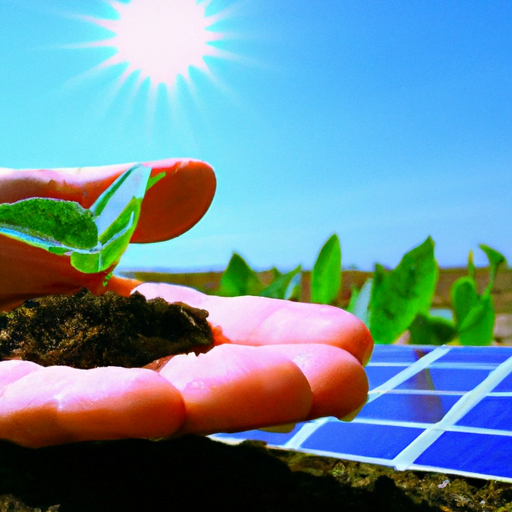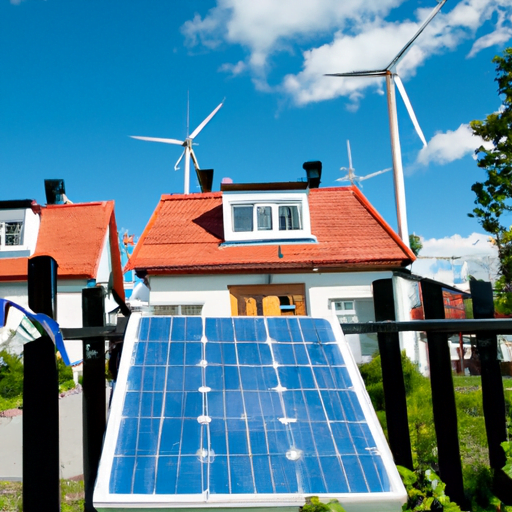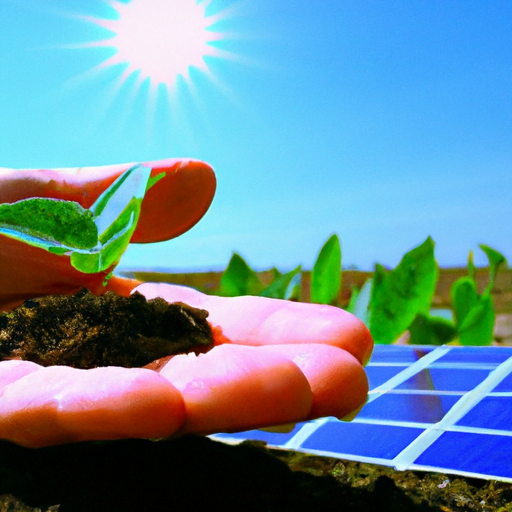Have you ever wondered how you could build a self-sustaining community? Well, off-grid living might just be the answer for you. By living off the grid, you can create a community that is self-sufficient and independent from external sources of energy and resources. It’s an intriguing concept that allows you to take control of your own life and live in harmony with nature. In this article, we will discuss the steps to creating a self-sustaining community and delve into the details of off-grid living.
Building a self-sustaining community begins with embracing the idea of living off-grid. This means disconnecting from the conventional power grid and finding alternative sources of energy, such as solar power or wind turbines. It also involves growing your own food through organic gardening, raising livestock, and practicing sustainable farming techniques. By becoming self-reliant in these aspects, you can reduce your dependence on external resources and create a sustainable living environment.
Another important aspect of creating a self-sustaining community is fostering a sense of collaboration and shared responsibility. When you live off-grid, you rely on the skills and expertise of your community members to fulfill different needs and tasks. This could include building and maintaining infrastructure, managing food production, or providing healthcare services. By working together and sharing resources, you can create a strong and supportive community that thrives on self-sustainability.
In the upcoming article, we’ll explore the steps to creating an off-grid community in more detail. You’ll learn about the importance of sustainable practices, such as water conservation and waste management. We’ll also discuss the challenges and rewards of off-grid living, as well as tips for finding like-minded individuals who share your vision of a self-sustaining community. So, stay tuned and get ready to embark on a journey towards creating a fulfilling and sustainable way of life.

Steps to Creating a Self-Sustaining Community
Understanding Self-Sustaining Communities
Before delving into the steps required to create a self-sustaining community, it’s important to first understand the concept itself. Self-sustaining communities are essentially communities that have the ability to meet their own needs without relying heavily on external resources or infrastructure. These communities are designed to be resilient, environmentally friendly, and socially cohesive.
Identifying the Need for Self-Sustaining Communities
In today’s fast-paced and interconnected world, there are numerous challenges that individuals and communities face. These challenges include rising living costs, overconsumption of resources, and increased environmental impacts. Traditional communities often contribute to these challenges, as their dependence on external systems for energy, food, and water can lead to resource depletion and environmental degradation.
Factors to Consider in Building a Self-Sustaining Community
Creating a self-sustaining community requires careful consideration of several factors. The location and availability of land are crucial, as it determines the potential for resource management and conservation. Community governance and decision-making processes are also important, as they shape the direction and values of the community.
Step 1: Establishing the Vision and Mission
The first step in building a self-sustaining community is to establish a clear vision and mission. This involves defining the purpose of the community and identifying shared values and goals. By clearly stating the intentions and aspirations of the community, individuals can work together towards a common objective.
Step 2: Creating a Comprehensive Plan
Once the vision and mission are established, it’s important to create a comprehensive plan for the community. This includes designing the land layout and infrastructure, developing sustainable housing options, and implementing methods for food production and agriculture. By carefully considering the physical aspects of the community, individuals can create an environment that supports self-sufficiency and resilience.
Step 3: Engaging the Community
A self-sustaining community cannot exist without the active participation and engagement of its members. Recruiting and involving community members is essential in building a strong and vibrant community. Building relationships and fostering collaboration among individuals ensures a sense of belonging and collective responsibility towards the community’s sustainability goals.
Step 4: Implementing Sustainable Systems
Implementing sustainable systems is a crucial step towards achieving self-sufficiency. Renewable energy generation, such as solar panels or wind turbines, can provide clean and reliable power for the community. Water collection and purification systems are also important, as they ensure a consistent supply of clean water. Additionally, waste management solutions help minimize environmental impacts and maximize resource utilization.
Step 5: Developing Local Economies
Creating a self-sustaining community involves developing local economies that support the community’s needs. Encouraging entrepreneurship and supporting local businesses can help create a strong economic foundation. Additionally, implementing alternative currencies and exchange systems can promote local trade and economic resilience.
Step 6: Continuous Learning and Adaptation
Creating a self-sustaining community is an ongoing journey that requires continuous learning and adaptation. Education and skill development are essential in equipping community members with the knowledge and capabilities to thrive in a self-sustaining environment. Research and innovation also play a crucial role in finding sustainable solutions and continuously improving the community’s practices.
Conclusion
Creating a self-sustaining community is a complex yet rewarding endeavor that individuals can contribute to. By following these steps and taking an active role in building a self-sustaining community, individuals can make a positive impact on the environment and create a more sustainable and resilient future. It is through collective efforts and a shared vision that self-sustaining communities can thrive and inspire others to take similar actions. Now, it’s your turn to embrace the challenge and begin the journey towards a self-sustaining community.





